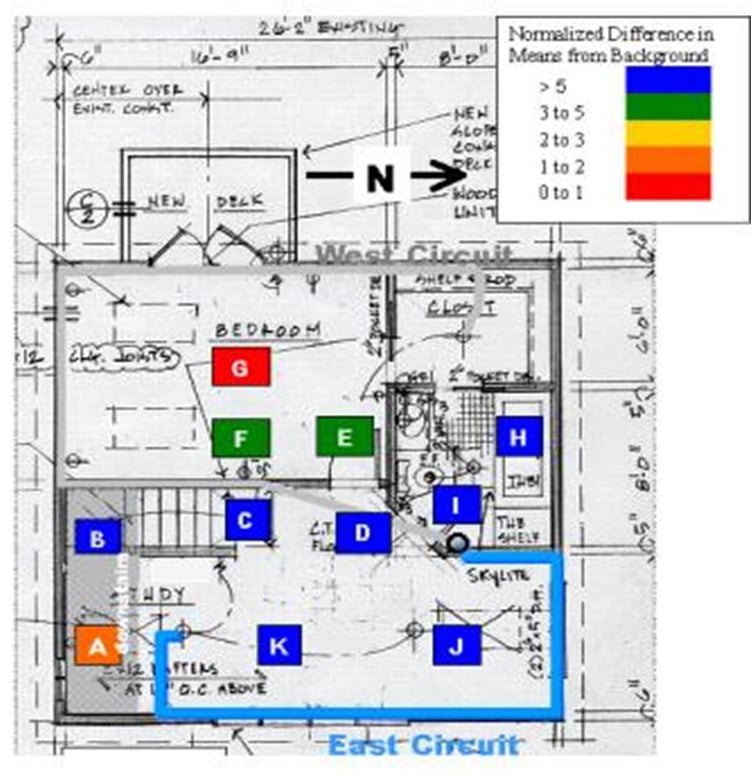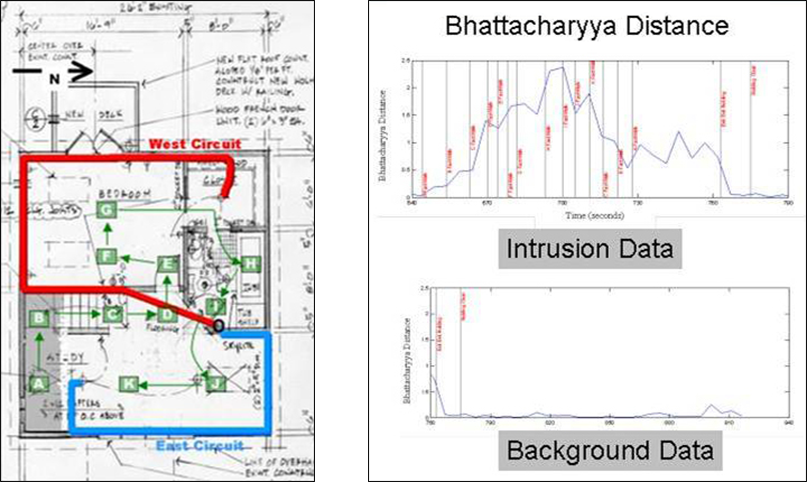The objective of intrusion detection is to show proof of principal and feasibility of a single insertion point system to monitor intrusions in a secured building.
In the intrusion detection program, funded by the United States government, MTRI's engineers used indigenous power lines embedded in a building, connected into the building's fuse box, and exploited an induced electric field by using an impedance bridge to sense changes in impedance due to the presence of a person. They used multi-port measurements and frequency diversity to provide some spatial specificity to the intrusion detection.
Researchers collected data from two circuits at a residential dwelling. A researcher
outside communicated with the intruder, instructing him to move through the course,
while another researcher noted times and events
Normal walk-through labeled locations on the east circuit.
Publications
Buller, W., Wilson, B. (2006). Measuring the Capacitance of Electrical Wiring and Humans for Proximity Sensing with Existing Electrical Infrastructure. IEEE International Conference on Electro/information Technology: 93 - 96.


